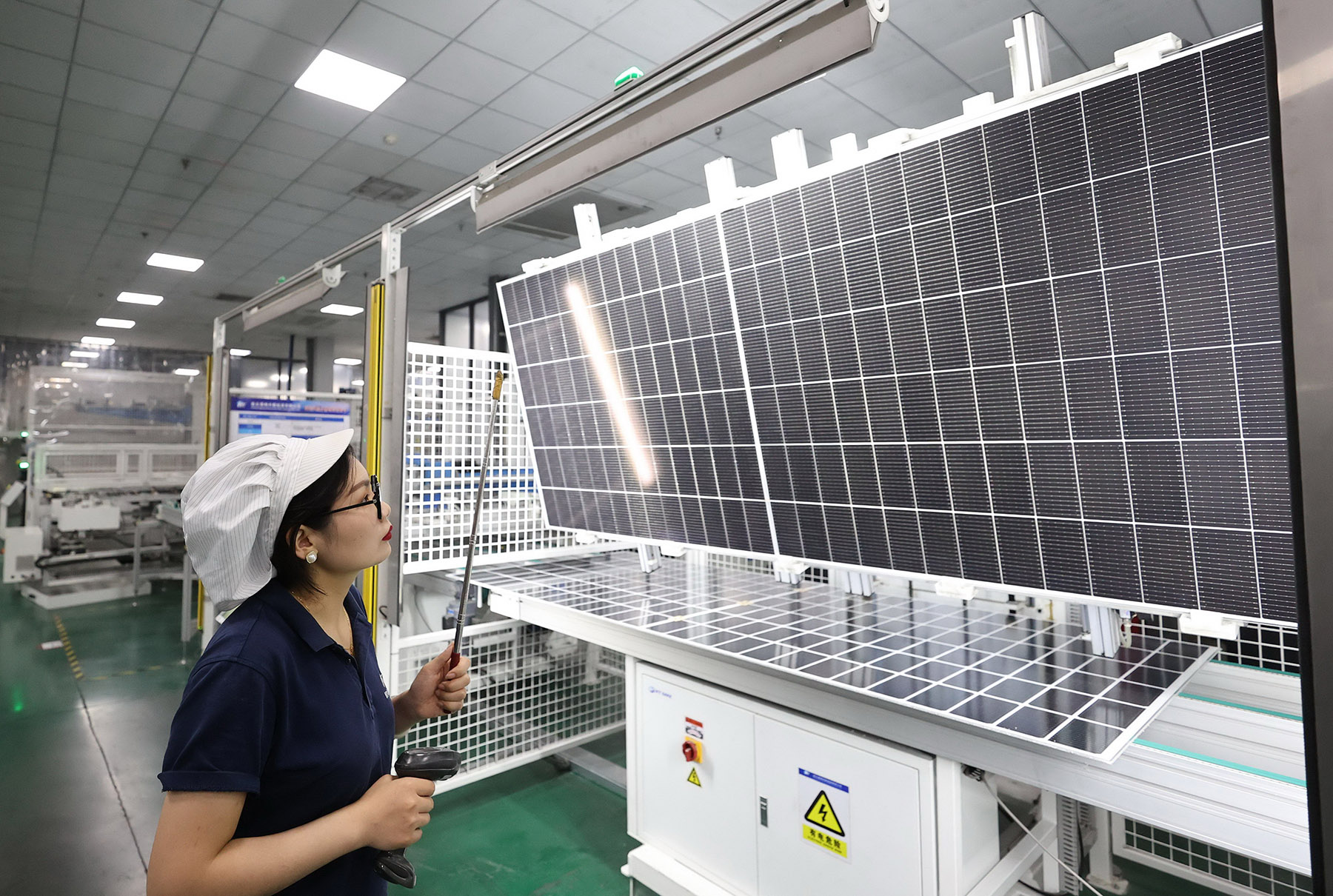
China's Ministry of Industry and Information Technology updated an investment norm for the domestic photovoltaic manufacturing industry on Tuesday, which experts said will guide its structural adjustment and make its development healthier against the backdrop of rapid expansion and trade conflicts.
The updated norm proposed a minimum capital ratio of 30 percent for new photovoltaic manufacturing projects and project expansions, up from 20-30 percent in the 2021 version. Additionally, enterprises need to ensure their actual production in the previous year is at least 50 percent of their production capacity.
READ MORE: Solar needs 'visible', 'invisible' guiding hand
The updated norm detailed electricity consumption requirements and technical specifications for products in newly established and expanded companies.
The photovoltaic manufacturing industry encompasses the production of polysilicon, wafers, cells, modules, inverters and related components.
Compared to the 2021 version, updated details include raised photoelectric conversion efficiency standards for cells and modules, alongside new stipulations for green production. Public opinions will be sought until Monday.
Experts said they anticipate these changes to mitigate risks of disorderly expansion, accelerate the phase-out of outdated capacities, foster high-quality development and support the industry's long-term sustainability.
"The MIIT's release of an updated industry norm aims to encourage photovoltaic enterprises to prioritize technological innovation, research and development over mass expansion in scale and disorderly competition, promoting advancements toward high-end, intelligent and environmentally friendly development of the photovoltaic manufacturing sector," said Lin Boqiang, head of the China Institute for Studies in Energy Policy at Xiamen University.
Lin said over the past few years, the photovoltaic industry has seen fierce competition among its constituents.
ALSO READ: Long-term prospects of photovoltaics seen bright
Meanwhile, financial institutions have actively bolstered the new energy sector with investment incentives and financing buoyed by market demand and an influx of manufacturers hoping to tap the market trend. All this led to new problems in the industry.
"The photovoltaic industry is still at a phase of structural adjustment facing the phase-out of outdated capacity and the cultivation of advanced capacity," Lin said.
Lin further said the updated norm, particularly the requirement of increasing capital ratio for new and expanded projects, will hasten this adjustment phase, marking a positive step toward the industry's health and sustainable growth.
Recently, several photovoltaic enterprises, including LONGi Green Energy Technology, Tongwei Co Ltd, Aiko Solar and JA Solar, projected losses for the first half of the year. Companies attributed this possible downturn mainly to continuous declines in silicon material prices, impacting wafer, cell and module pricing, thus affecting overall industry performance.


